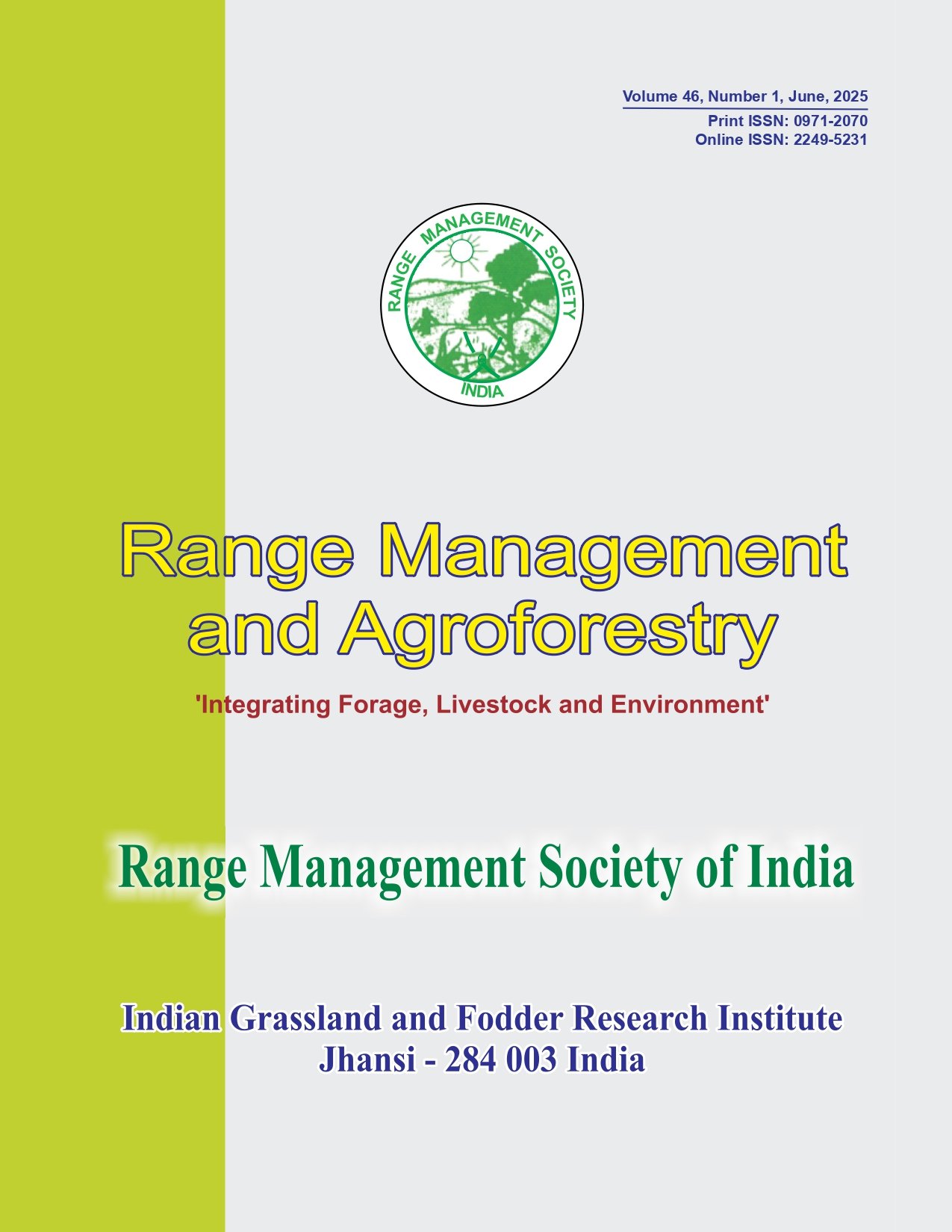Carbon sequestration potential of grass based fodder production systems in humid tropics of Kerala
Keywords:
Carbon sequestration, Economics, Grasses, Green fodder yieldAbstract
A field experiment was conducted at AICRP on Forage Crops and Utilization, College of Agriculture, Vellayani, Thiruvananthapuram; Kerala during June 2016 to May 2019 to find out the carbon sequestration potential of grass based fodder production systems in humid tropics of Kerala. The experiment was laid out in RBD with three replications, comprising of eight treatments. The treatments comprised T1 - BN hybrid sole, T2 -Guinea grass sole, T3 - BN hybrid paired row+ fodder cowpea, T4 -BN hybrid paired row + Desmanthus, T5 -BN hybrid paired row + Agati (Sesbania grandiflora), T6 -Guinea grass paired row + fodder cowpea, T7 -Guinea grass paired row + Desmanthus and T8 - Guinea Grass paired row + Agati. The pooled data over three years period revealed that grass legume mixture of BN hybrid (paired row) + fodder cowpea had a capacity to sequester 20.69 t of carbon per hectare and it was 4.8 per cent higher than the next best treatment (BN hybrid paired row + Agati) and the same treatment was significantly superior with respect to green fodder yield (208.27 t ha-1) and dry fodder yield (48.87 t ha-1) over all other grasslegume mixtures. Intercropping of BN hybrid (paired row) + Agati recorded crude protein yield of 3.75 t ha-1. Highest cost (Rs. 315000 ha-1) was incurred when BN hybrid was cultivated as a sole crop, whereas intercropping guinea grass with Agati recorded the lowest cost of cultivation (Rs. 240000 ha-1), highest net monetary return (Rs.355500 ha1 ) as well as benefit cost ratio (2.48). Considering the fodder yield and carbon stock, BN hybrid (paired row) with fodder cowpea was found as the most promising system for meeting both farmer needs and environmental sustainability.




